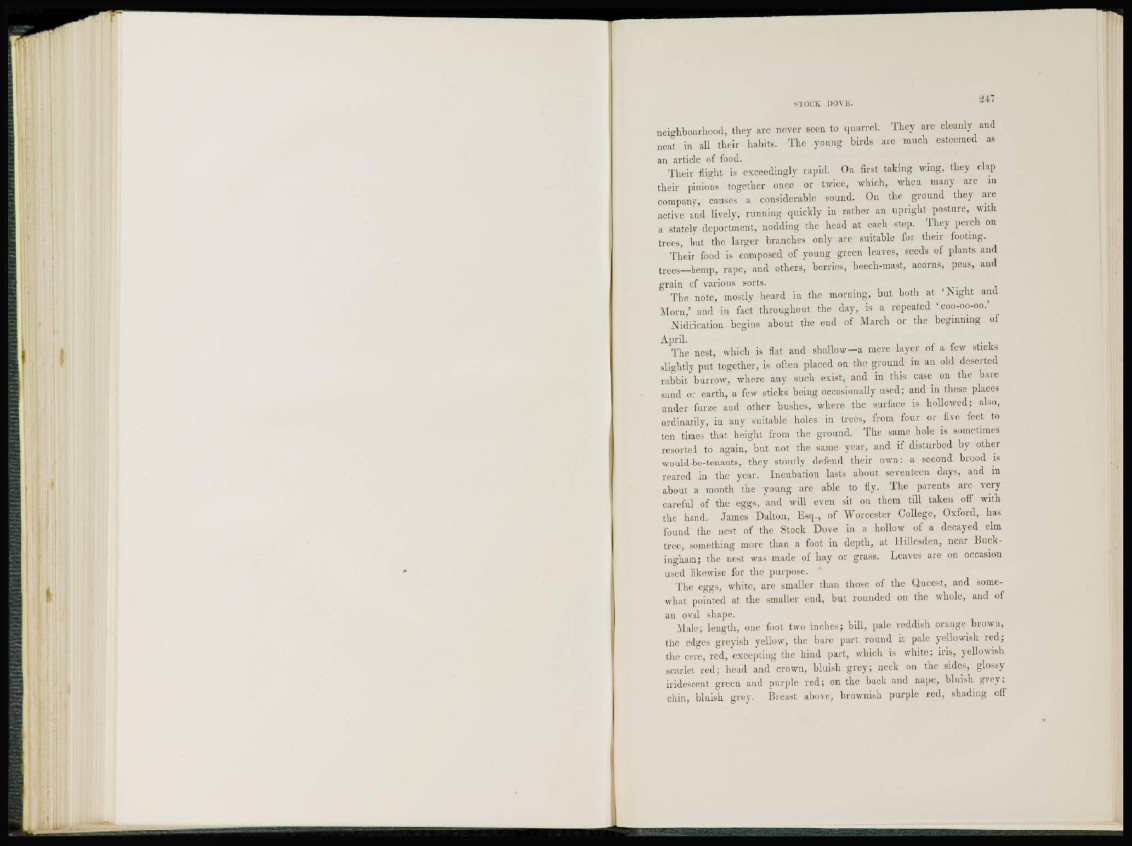
STOCK DOVE. ~T7
neighbourhood, they arc never seen to quarrel. They are cleanly and
neat in all their habits. The young birds arc much esteemed as
an article of food.
Their flight is exceedingly rapid. On first taking wing, they clap
their pinions together once or twice, which, when many arc in
company, causes a considerable sound. On the ground they are
active and lively, running quickly in rather an upright posture, with
a stately deportment, nodding the head at each step. They perch on
trees, but the larger branches only are suitable for their footing.
Their food is composed of young green leaves, seeds of plants and
trees—hemp, rape, and others, berries, beech-mast, acorns, peas, and
grain of various sorts.
The note, mostly heard in the morning, but both at 'Night and
Morn,' and in fact throughout the day, is a repeated 'coo-oo-oo.'
Nidification begins about the end of March or the beginning of
April.
The nest, which is flat and shallow—a mere layer of a few sticks
slightly put together, is often placed on the ground in an old deserted
rabbit burrow, where any such exist, and in this case on the bare
sand or earth, a few sticks being occasionally used; and in these places
under furze and other bushes, where the surface is hollowed; also,
ordinarily, in any suitable holes in trees, from four or five feet to
ten times that height from the ground. The same hole is sometimes
resorted to again, but not. the same year, and if disturbed by other
would-be-tenants, they stoutly defend their own: a second brood is
reared in the year. Incubation lasts about seventeen days, and in
about a month the young are able to fly. The parents arc very
careful of the eggs, and will even sit on them till taken off with
the hand. James Dalton, E s q . , of Worcester College, Oxford, has
found the nest of the Stock Dove in a hollow of a decayed elm
tree, something more than a foot in depth, at Ilillcsden, near lSuckingham;
the nest was made of hay or grass. Leaves are on occasion
used likewise for the purpose.
The eggs, white, are smaller than those of the Qucest, and somewhat
pointed at the smaller end, but rounded on the whole, and of
an oval shape.
Male; length, one foot two inche-s; bill, pale reddish orange brown,
the edges greyish yellow, the bare part round it pale yellowish red;
the cere, red, excepting the hind part, which is white; iris, yellowish
scarlet red; head and crown, bluish grey; neck on the sides, glossy
iridescent green and purple red; on the back and nape, bluish grev;
chin, bluish grey. Breast above, brownish purple red, shading off